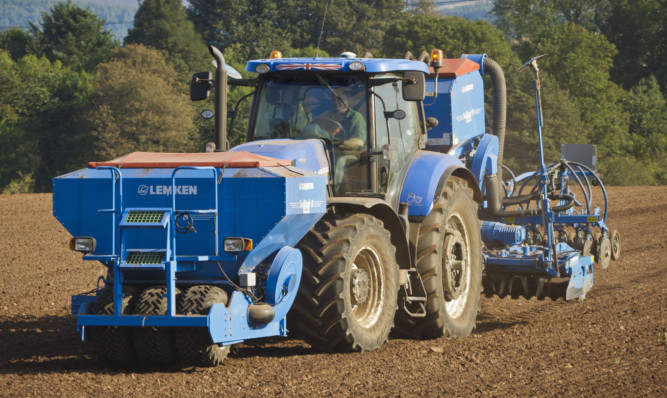Frustration with the Scottish Government is continuing to build as farmers are becoming increasingly aware that they are in the dark over much of the detail on the greening requirements of the new Common Agricultural Policy (CAP).
Failure to comply with the requirements will at a minimum put the 30% of the new Single Farm Payment linked to greening at risk.
Harvest is finished and autumn sowing is continuing apace. Why then has Scottish Government failed as yet to provide a full set of guidance?
That is the question being angrily posed by, among others, NFU Scotland.
Union vice-president Allan Bowie said yesterday: “For months we have been seeking answers to a significant number of questions but have received insufficient information.
“Now members are making their own choices and hoping they will comply with the rules when they are eventually published in full.
“While most know that if they have more than 30 hectares of arable land whether crops, temporary grass or fallow they will need to plant three crops, with rules on the percentage mix of each crop, a number of farmers, particularly those with temporary grass, don’t realise that the three-crop rule applies to them also.
“It doesn’t matter if your main activity is arable, livestock or dairy if you have 30ha of arable land, including temporary grass, then the three-crop rule applies,” he added.
“While the three-crop rule causes some confusion, the biggest headache is on how to comply with the Ecological Focus Area (EFA) rules, which means that any farm with more than 15ha of arable land will need to ensure that 5% of their arable area is managed in a certain way.
“This means choosing 5% of your land and managing it in a way that complies with the EFA rules on field margins or buffer strips if it is along a watercourse, complies with eligible catch crops, eligible nitrogen fixing crops or is left fallow.”
The detail the NFUS is still pressing the Scottish Government for includes:
* Management rules for nitrogen-fixing crops.
* The start and end dates for EFA fallow.
* Requirements for land to be deemed to be at a farmer’s ‘disposal’ (important for rental/
tenancy issues).
* Any changes on rules concerning cultivation next to landscape features.
* Rules for catch or cover crops claimed as EFA.
* The crops acceptable for crop diversification.
* Crops acceptable as ‘permanent’ or ‘leguminous’.
* Rules on crops sown as a mixture of species.
As an example of the sort of decisions which farmers are having to make with only limited information available, some NFUS board members have anonymously revealed their contingency plans.
* Board member one
“I am keeping ground in stubble until spring, with the intention of then planting spring barley or spring beans.
“Planting beans is the preference, but this will depend on the management rules when they are published.
“Just now I am maintaining grass margins and will use them to count towards my EFA requirement if I go down the spring barley route.”
* Board member two
“Between whole-crop triticale and spring barley for combining, I am at about 40ha arable.
“I also have more than 60ha temporary grass, which must be taken into account when determining EFA requirement.
“The possible management rules for nitrogen-fixing crops to qualify for EFA means that my temporary grass acreage will rack me up a significant EFA requirement, which will pull precious ploughable land out of production.
“As primarily a beef and sheep producer who grows both spring barley for feed and triticale for whole crop, the three-crop rule isn’t a problem. But to get away from a new form of set-aside and the compliance traps of greening, becoming exempt looks attractive.
“Unless the EFA package is user-friendly, it looks as if walking away from growing my own feed barley and ducking under the 30ha threshold for cropping is the smart way forward.
“With more than 75% grass, I will be exempt from crop diversity and EFA.”
* Board member three
“I will use field margins and hopefully plant some beans or peas in spring; the fallow option is not good for us.
“On river courses, dykes, burns etc I will already have a two-metre GAEC requirement, so I believe I will use this to count towards my EFA requirement.”
* Board member four
“In order to conform to my greening obligations, I have decided not to plough a strip around the headriggs of the grass fields being sown into cereals.
“My intention is to mow the grass and take a few silage bales from the buffer strips/margins once the restriction date is passed assuming there will be a restriction on the grass that can be taken.
“The advantage as I see it is that the land won’t become a weed bank and may provide some good animal feed.
“This option should also provide useful wildlife corridors during the growing season and be one of the more environmentally friendly measures.”
